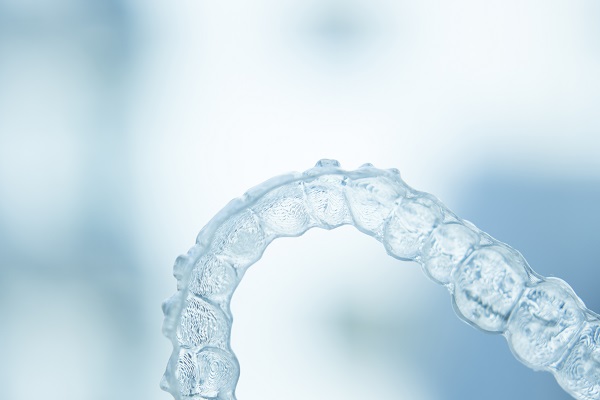Can Invisalign Fix Spaces Between Teeth?

There is a wide range of issues that Invisalign® clear aligners can be used to treat, including gaps in the teeth. Also known as diastema, spaces can appear between the front teeth that can be visible when a person smiles. While there are often no oral health issues that develop due to diastema, some people may wish to seek treatment for cosmetic reasons. Clear aligners are one option for moving the teeth closer together for a more consistent appearance.
What causes gaps in the teeth?
While some people have diastema due to genetic reasons, there are several other factors that can lead to gaps in the teeth:
- Jaw size: In some situations, a large jaw that is disproportionate to the size of the teeth can leave a gap because the teeth are too small to fill out the space; this issue may even be hereditary and be present in several family members
- Bad habits in children: Even if a person is born with teeth that start out close together, thumb sucking and pacifier use can cause the teeth to pull forward and away from each other
- Incorrect swallowing reflex: For people of all ages, an incorrect swallowing reflex called tongue thrust can put pressure on the front teeth, causing them to spread apart due to the tongue pushing against the teeth instead of the roof of the mouth when swallowing
- Gum disease: Gum disease can damage the tissue surrounding the teeth, causing bone loss and possible spaces between the teeth
- Tissue overgrowth: Some people have a piece of tissue that grows between the two top front teeth, causing a gap
How can Invisalign® treat diastema?
Clear aligners can be used alone or in conjunction with other treatments to close gaps in the teeth, depending on the root of the issue. For situations causes by a disproportionate jaw to tooth size, thumb sucking, or tongue thrust, Invisalign® trays can be worn to slowly prod each individual tooth towards the other. However, aligners have limits as to how much they can adjust. In general, these braces can close about 6mm total per arch. If the gaps are very large or multiple teeth are missing, then an alternative may be necessary.
For gaps caused by gum disease or excess gum tissue between the front teeth, clear aligners may be combined with other treatments to more effectively address the issue. Often with gum disease, the actual diseased tissue will need to be treated or removed from the mouth. If significant bone loss occurred, a bone graft may be necessary to restore volume to the jaw. Removing any teeth that cannot be salvaged and placing dental implants may also be part of the treatment process. For excess tissue, a surgery called a frenectomy may be required to reshape the gumline.
Conclusion
No matter the cause, if you have embarrassing gaps in the teeth that you want to close, the first step is to ask a dentist about using Invisalign® to close the spaces. From here, they can examine the situation, determine the most likely cause for the gap, and propose a solution.
Request an appointment here: https://davisanddingle.com or call Davis & Dingle Family Dentistry at (803) 567-1804 for an appointment in our Columbia office.
Check out what others are saying about our services on Yelp: Read our Yelp reviews.
Recent Posts
Dental care plays a pivotal role in maintaining a healthy and beautiful smile. General dentists provide various services to help individuals achieve optimal oral health. This blog will explore the most commonly asked questions about general dentists and explain their diverse services.General dentistry is a type of dental care focused on preventing, diagnosing, and treating…
It is natural for teeth to discolor over time. If you have noticed that your smile has lost its luster, a general dentist can help. For effective and long-lasting results, get personalized advice and treatment from the dentist in-office. However, there are general steps you can take to improve the whiteness of your smile. Below…
Tooth loss can hurt one’s smile as well as the ability to eat or speak. With implant-supported dentures, the entire look of the smile can be transformed, and individuals can enjoy more freedom with food choices. These dentures are long-lasting and have a positive impact on oral and emotional health.Dentures are a dental tool for…
Curious about what you should be asking your general dentist when you visit? Read on to learn more. Visiting a general dentist for regular check-ups is essential for maintaining good oral health. By learning more about their oral health, patients can prevent potential problems and be more aware of changes that may require attention.Going to…


